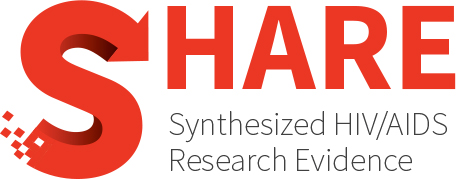Category Archives: Sexual risk behaviour
Revisiting the prevalence of unhealthy alcohol use among ethnic minority immigrant gay, bisexual men, and other men who have sex with men in North America: A systematic review and meta-analysis
Unhealthy alcohol use is a significant public health concern among ethnic minority immigrant gay, bisexual men, and other men who have sex with men (GBMSM) in North America. The definition...
Magnitude of consistent condom use and associated factors among people living with HIV/AIDS in Ethiopia: Implication for reducing infections and re-infection. A systematic review and meta-analysis
BACKGROUND: The human immune virus or acquired immune deficiency syndrome, is a major threat to the health of millions of people worldwide. In Ethiopia, there were more than a million...
Sexual behavior among emerging adults in Africa: A systematic review and meta-analysis
BACKGROUND: Estimates on sexual behavior (SB) among emerging adults (EmA) is varied in literature, which presents a challenge when designing targeted interventions. We aimed to summarize literature on prevalence and...
Level of HIV serodiscordance and associated factors among heterosexual couples in Ethiopia: A systematic review and meta-analysis
HIV-related causes accounted for approximately 770,000 deaths globally in 2018. Globally, there were 1.7 million new infections, and approximately 37.9 million people were living with HIV by the end of...
Estimated prevalence and associations of sexually transmissible bacterial enteric pathogens in asymptomatic men who have sex with men: A systematic review and meta-analysis
Objective: The reservoir of sexually transmissible bacterial enteric pathogens in asymptomatic men who have sex with men (MSM) may impact future outbreaks, and the evolution of antimicrobial resistance. We aimed to...
Repercussions of the COVID-19 pandemic on the HIV care continuum and related factors in economically disadvantaged nations: An integrated analysis using mixed-methods systematic review
BACKGROUND: The COVID-19 pandemic affected the self-management and care of people living with HIV, requiring adaptations in the way health services are provided. However, it is unclear how these changes...
Population percentage and population size of men who have sex with men in the United States, 2017–2021: Meta-analysis of 5 population-based surveys
BACKGROUND: Male-to-male sexual transmission continues to account for the greatest proportion of new HIV diagnoses in the United States. However, calculating population-specific surveillance metrics for HIV and other sexually transmitted...
The risks for HIV and sexually transmitted infections among men who have sex with men who engage in chemsex in low- and middle-income countries: A mixed methods systematic review and meta-analysis
Chemsex, the use of drugs during and/or prior to sex, has been found to increase the risk of HIV and sexually transmitted infections (STI) among men who have sex with...
Effectiveness of eHealth interventions for HIV prevention, testing and management: An umbrella review
BACKGROUND: Human immunodeficiency virus (HIV) infection has become a major contributor to the global burden of disease. Globally, the number of cases of HIV continues to increase. Electronic health (eHealth)...
Identifying best practices for increasing HIV pre-exposure prophylaxis (PrEP) use and persistence in the United States: A systematic review
A qualitative systematic review was conducted to evaluate pre-exposure prophylaxis (PrEP) interventions, describe characteristics of best practices for increasing PrEP use and persistence, and explore research gaps based on current...
